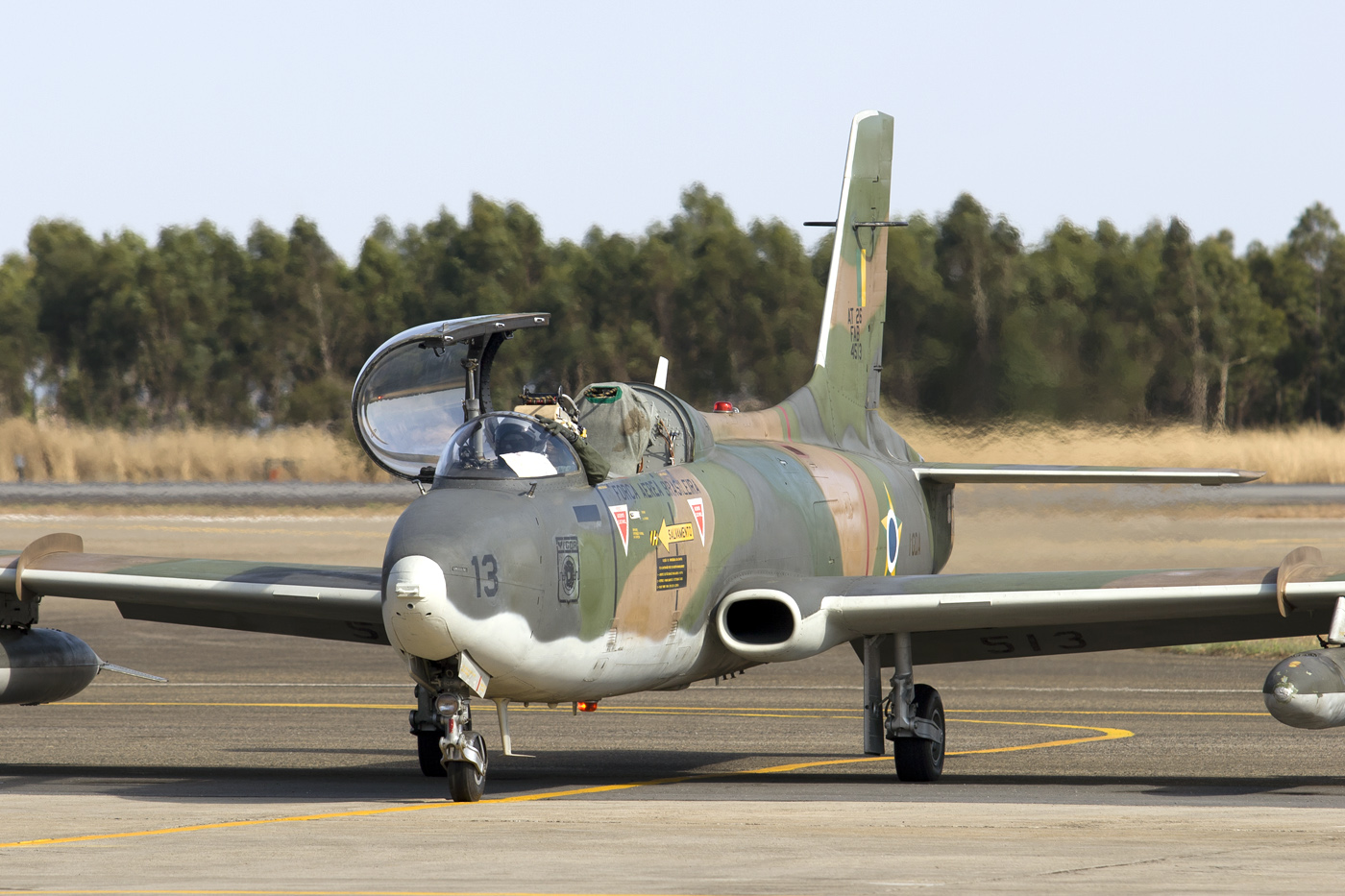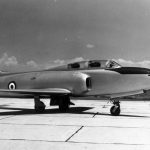As part of our series Today in Aviation History, we examine the first flight of the Aermacchi MB-326, which made its first flight on December 10, 1957. Following this flight, the MB-326 became one of the most widely used Italian aircraft in aviation history, seeing service as a trainer and ground attack aircraft from Australia to Argentina, and saw combat over Angola with the South African Air Force during the South African Border War. Additionally, the MB-326 was built overseas as well as in Italy.
The Aermacchi MB-326 has its origins in the 1950s, when several countries were developing jet trainers for their respective air forces. Among these new trainers were the Cessna T-37 Tweet, the BAC Jet Provost, the Aero L-29 Delfín, and the Fouga Magister. Th Italian Air Force (the Aeronautica Militare) sought to capitalize on this with the development of their own jet trainer. However, with Italy also being unable to build large bombers due to the effects of WWII on its industry and economy, it would also follow the trend of jet trainers being adapted for use as light attack aircraft, particularly for close air support missions. The aircraft’s development began as a private venture by Aermacchi (formerly Aeronautica Macchi), with Aermacchi’s chief designer, Ermanno Bazzocchi, taking the lead on the project. The resulting design was a single engine tandem seat jet with pressurized cockpits and was powered by an Armstrong Siddeley Viper turbojet engine. When the design was approved for construction and flight testing, it received the designation MB-326 (M for ‘Macchi’, B for ‘Bazzocchi’).
The MB-326 prototype, I-MAKI/MM.751, made its first flight on December 10, 1957, at Milano Malpensa Airport, with Aermacchi’s chief test pilot Guido Carestiato at the controls. While modifications in the design initially resulted in a heavier aircraft, the addition of an upgraded Viper engine led to an improvement in the MB-326’s overall performance. Its main rival in becoming widely adopted by the Italian Air Force was the Fiat G.80 and G.82, the first pure jet aircraft built in Italy. However, the G.80 series was heavier, larger and more expensive than the Aermacchi design, and the latter would be selected over the former for operational service.

By 1962, the MB-326 was formally accepted into service with the Italian Air Force. The Aermacchi MB-326 would also be one of the last Italian aircraft to become a major record-setter. In August 1961, Guido Carestiano, the MB-326’s test pilot, set an altitude record of 15,489 meters (50, 817 feet). Meanwhile, Massimo Ralli used the MB-326 to set the following records. February 8, 1966, climbing records of 2 min 2 sec to 3,000 m, 3 min 56 sec to 6,000 m, 6 min 39 sec to 9,000 m, and 12,000 m in 10 min 53 sec. On March 18, 1966, 15,690 m (51,476 ft) altitude record in horizontal flight, and 17,315 m (56,807) in an unrestricted climb. On July 18, 1966, an endurance record of 970 km (602 mi). On August 2, 1966, a speed record over a 3 km straight: 871 km/h (541 mph). On December 1966, speed record of 880.586 km/h (547.170 mph) over 15–25 km, 831.007 km/h (516.3 mph) over 100 km, 777.667 km/h (483.219 mph) over 500 km (310.6 mi), and another endurance record at 777.557 km (483.151 mi)
In its native Italy, the MB-326 was the mainstay jet trainer, alongside the trainer variant of the Fiat G.91 fighter-bomber, throughout the 1960s and 1970s, with many of the pilots who learned to fly jets in the MB-326 going on to fly the Italian Air Force’s fleet of Lockheed F-104 Starfighters. Even the former flag carrier for Italy, Alitalia, used four unarmed MB-326Ds for pilot training. The success of the MB-326 would also lead to its successor, the Aermacchi MB-339, whose later variants remain in service in Italy and abroad to this day.
Later, it would enter the armed forces of Australia, Argentina, Brazil, Cameroon, the Democratic Republic of the Congo [formerly Zaire], Ghana, Paraguay, South Africa, Togo, Tunisia, the United Arab Emirates, and Zambia. Additionally, several surplus aircraft were flown in the United States as part of the National Test Pilot School in Mojave, California. Besides its success as an export trainer, the MB-326 was also assembled and manufactured abroad. In Australia, several MB-326H models were delivered from Italy, while others were either manufactured by the Commonwealth Aircraft Corporation (CAC) as the CA-30 and were used for flight training and by the Roulettes, the Royal Australian Air Force’s demonstration team, and were later replaced by aircraft such as the Pilatus PC-9 and the BAC Hawk.

The Brazilian Air Force would become the largest operator of the type, with the examples sent to Brazil receiving the designation MB-326GC. With the arrival of the first examples in Brazil, the Brazilian company Embraer secured a license from Aermacchi in 1970 to manufacture the aircraft as the Embraer EMB-326, which would later be redesignated as the AT-26 Xavante, named after the indigenous Xavante peoples (along with the RT-26 reconnaissance variant). The Brazilians also became an exporter of the MB-326 in their own right, with former Brazilian Air Force examples going to Argentina, Togo, and Paraguay. Today, however, the Xavantes have been phased in favor of the Embraer EMB 312 Tucano turboprop trainer/ground attacker.
Another long-term operator of the MB-326 was the South African Air Force (SAAF), who also produced their own development in the form of the Atlas Impala. The South Africans were also the primary air force to deploy MB-326/Impala in combat during the South African Border War (1966-1990), where they used against rebels in Angola, South-West Africa (now Namibia) and Zambia, such as the People’s Armed Forces for the Liberation of Angola and Cuban expeditionary forces. The MB-326 was by no means the fastest jet above the battlefield, but when flying at low level to avoid anti-aircraft defenses, it could deliver a variety of cannon rounds, rockets, and bombs unto opposing ground forces, and its ease of maintenance and flying characteristics meant it was able to operate from airfields in unimproved areas. They were also used to intercept Soviet-made Mil Mi-8 and Mil Mi-24 helicopters used to provide air support to Angolan and Cuban ground forces. In addition to their combat roles, MB-326s/Impalas were used for their primary purpose of training and were also flown by the South African Air Force demonstration team, the Silver Falcons until they were replaced in 1998 by the Pilatus PC-7 Turbo Trainer, though MB-326s/Impalas continued their service well into the 2000s.
Today, most air forces that have flown the Aermacchi MB-326 have retired it in favor of newer turbojets or turboprops that fulfill the same training and ground attacker roles that the MB-326 carried out. Many of the surviving examples have become museum exhibits or gate guardians at military installations around the world. Yet a small number remain in limited service today, with a couple examples even maintained in flying condition in Italy with the Volafenice collection at Reggio Emilia Airport (as covered HERE and HERE). Even today, the aircraft holds a special place in the hearts and minds of those who flew and maintained it, as well as aviation enthusiasts around the world who saw them on their routine sorties or demonstrating the capabilities of their nation’s aerial demonstration teams at countless airshows, and the Aermacchi MB-326 remains one of the most successful post-WWII designs in Italian aviation history.
Today in Aviation History is a series highlighting the achievements, innovations, and milestones that have shaped the skies. All the previous anniversaries are available HERE


































